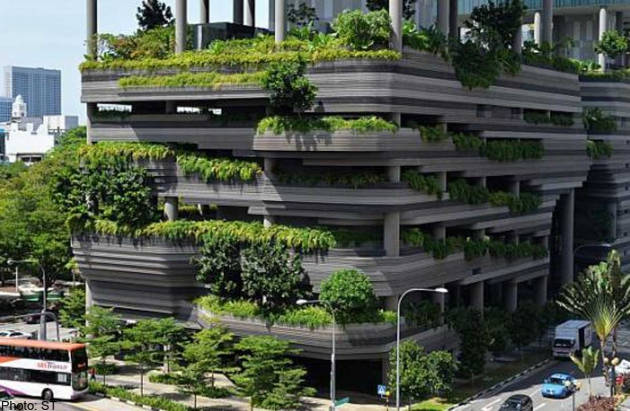Although not as bad as last year's dry spell, it is still the second year in a row the Republic is experiencing such weather conditions, on top of other symptoms of climate change, such as heavier rain and flash flooding.
But there is hope for this concrete jungle. An internationally renowned urban planner has suggested that in built-up Singapore, its buildings could do more to protect the country against the effects of climate change.
At a green conference on Feb 27, Dr. Herbert Dreiseitl suggested that buildings could include more green features, and from an earlier stage of the design process.
Water retention tanks could be installed to store rainwater collected during heavy rain. This would not only reduce the amount of rainwater flowing into the public drainage system - thus lessening the chances of flash floods - the stored water can also be used to water plants during a dry spell.
"We have 2.4m of rain coming down every year, we should be able to use this water, and we can, if we have a collection system," noted Dr. Dreiseitl, who is director of Liveable Cities Lab.
The German, who founded city planning firm Atelier Dreiseitl and was in 2011 awarded the prestigious Loeb Fellowship at the Graduate School of Design at Harvard University, is no stranger to Singapore's landscape.
He was one of the designers behind the project to convert a concrete canal in Bishan Park into a meandering waterway with anti- flood features, under the national water agency PUB's Active Beautiful Clean (ABC) Waters program.
What Singapore has done
The country has experienced more instances of extreme weather, from intense downpours to prolonged dry periods. In 2013, there were 36 flash-flood days, up from 23 in 2011.
During last year's drought, when barely any rain fell for two 27-day dry stretches, PUB was pumping 20 million to 25 million gallons of Newater a day into reservoirs to maintain their water levels. Desalination and Newater plants ran at almost full capacity for more than a month to supply the country with water.
During the current dry stretch, PUB has also injected Newater into the reservoirs.
Over the years, the agency has spent over $2 billion on drainage infrastructure, and more than $150 million a year on drainage improvement projects. This has reduced flood-prone areas from 3,200ha in the 1970s, to pockets amounting to about 35ha today.
But limited space for drainage infrastructure means flood management is an ongoing challenge. The PUB recognizes this, which is why it looks at other ways to deal with flash flooding, such as the ABC Waters program.
It is working with developers of commercial, industrial, institutional and residential projects that are at least 0.2ha to implement measures, such as facade greenery, to slow runoff.
PUB also works to enhance flood protection by installing flood barriers and raised platforms to prevent water from entering buildings.
Source: Asia One | 11 March 2015














